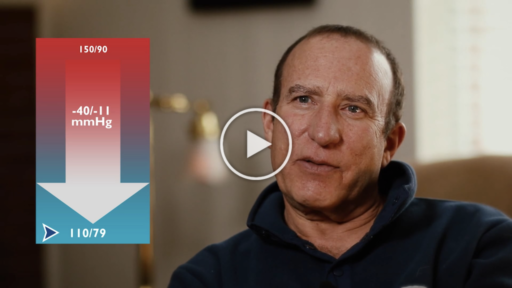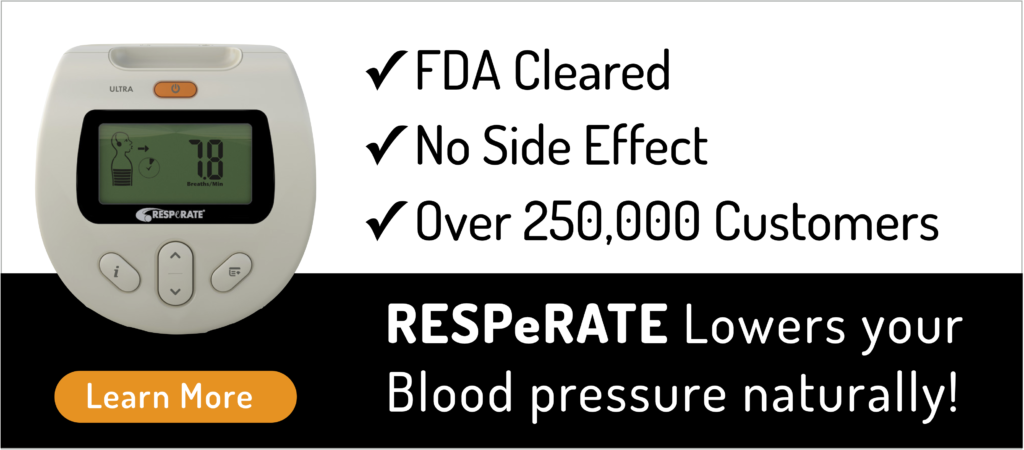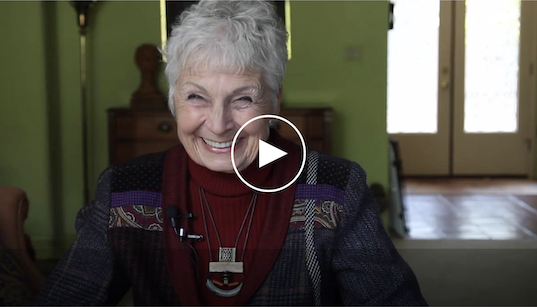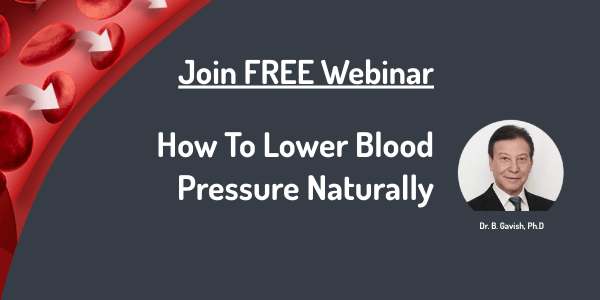Because high blood pressure puts a strain on your heart, brain and blood vessels, it can increase your risk of developing heart attacks and strokes in the future. Having a raised level of cholesterol in your blood also increases the risk of developing these health problems.
So, if you have both a high blood cholesterol level and high blood pressure, then your risk of heart attack or stroke is much stronger than if you had just one or the other.
What Is Cholesterol?
Cholesterol is a naturally occurring substance made by the liver and required by the body for the proper function of cells, nerves, and hormones.
Cholesterol travels in the lipids (fatty acids) of the bloodstream, also called plaque, can build up in the walls of the arteries decreasing the flow of blood to vital areas of the body. If plaque continues to build long-term it significantly increases the risk of having a heart attack or stroke.
Normally, cholesterol is kept in balance. But, the standard western diet which contains a large number of hydrogenated fats and refined carbohydrates leads to an upset in this balance. The imbalance is manifested in elevated LDL (bad cholesterol) and a low HDL (good cholesterol) which increases our risk of heart attack or stroke. Other causes include inactivity, diabetes, stress, and hypothyroidism.
As most are aware, with visits to their doctor, there are three lipoproteins in our blood that are important to our health, low-density lipoproteins (LDL), high-density lipoproteins (HDL), and triglycerides. LDL is known as the bad cholesterol because it is low in proteins and high in cholesterol.
HDL, on the other hand, is high in proteins and low in cholesterol and therefore known as good cholesterol. Triglycerides are a separate lipid in the bloodstream that provides a way for the body to store excess energy, but if they are high is another warning sign.
What Causes High Cholesterol?
If you have high cholesterol, there’s a good chance it’s your fault. And that’s good news! It means you can do something about it.
Your body naturally produces all the LDL (bad) cholesterol it needs. An unhealthy lifestyle, such as eating unhealthy foods and being physically inactive, causes your body to have more LDL cholesterol in your blood than it needs. This is the cause of high cholesterol for most people.
Check your family history. Additionally, some people inherit genes from their mother, father or even grandparents that cause them to have too much cholesterol. This is called familial hypercholesterolemia (FH). The severity of FH is related to the duration and degree of LDL cholesterol in the blood. FH is dangerous because it can cause premature atherosclerotic heart disease.
If you have high blood cholesterol, making lifestyle modifications is important to help lower your risk of heart disease. If they don’t lower your risk enough, you may need prescribed medications.
Advertisement
Watch how Julie Lowered her Blood Pressure Naturally. It was 170/110, this morning it was 120/80
Learn More…
If that sounds bad, consider your options. It’s a lot better to change your lifestyle now, to prevent a heart attack or stroke than to wait until a devastating event changes your life for you. Making minor changes now can help prevent major changes later.
If you have a stroke or heart failure from a serious heart attack, you may never fully recover.
Unhealthy Lifestyle
Unhealthy behaviors are the biggest reason why most people with high cholesterol have it. These behaviors include:
- Unhealthy diet
- Lack of physical activity
- Smoking or exposure to tobacco smoke
- Excess weight
How Can I Lower My High Cholesterol Naturally?
Avoid Eating Saturated Fats:
Both polyunsaturated and monounsaturated fatty acids help lower LDL. Most plant-derived oils, including canola, safflower, sunflower, olive, grape-seed, and peanut oils, contain both. Fatty fish (such as salmon, tuna, trout, herring, and mackerel), seeds, nuts, avocados, and soybeans are also great sources.
Eat A Rainbow of Fruits An Vegetables:
Fruits and vegetables have scads of ingredients that lower cholesterol—including fiber, cholesterol-blocking molecules called sterols and stanols, and eye-appealing pigments. The heart-healthy list spans the color spectrum—leafy greens, yellow squashes, carrots, tomatoes, strawberries, plums, blueberries. As a rule, the richer the hue, the better the food is for you.
Avoid Refined Grains and Sugars:
Whole grains are another good source of fiber. Instead of refined flour and white rice, try whole-wheat flour and brown or wild rice. Old-fashioned oatmeal is also a good choice, but not the quick-cooking versions, which have had much of the fiber processed out.
And don’t substitute sugar for fat. “It’s one of the worst choices you can make,” McManus warns. Food manufacturers may boost the sugar content of low-fat salad dressings and sauces to add flavor. If you see sugar, corn syrup, or any word ending in “one” near the top of the list of ingredients, choose a higher-fat version without trans fats instead.
Take Supplements:
Vitamin E is the anti-cholesterol vitamin and a powerful antioxidant nutrient, capable of protecting cholesterol from oxidation. Vitamin E is also thought to be capable of preventing heart disease through its ability to thin the blood.
A supplement called policosanol may also assist in lowering cholesterol, according to several studies. Derived from sugar cane wax and beeswax, policosanol appears to be capable of lowering total cholesterol as well as LDL cholesterol and boosting levels of the helpful HDL cholesterol.
Omega-3 fats can be found in fish oil capsules as well as flaxseed oil if you are vegetarian. Similar to the benefits of including more oily fish in your diet, omega-3 supplements reduce cholesterol by reducing the amount the body produces.
Go Go Herbs!
The most exciting development in herbal medicine for high cholesterol comes in the form of Chinese red yeast rice. Made by fermenting red yeast over rice, it is a substance used in Traditional Chinese medicine as a remedy for indigestion and poor circulation and, as scientists have now discovered, for high cholesterol, lowering raised levels of cholesterol and triglycerides in the blood.
It is worthwhile making a green tea rich in cardio-protective antioxidants called catechins and polyphenols – your hot drink of choice. Research shows that drinking green tea on a regular basis raises good HDL cholesterol and lowers total cholesterol by blocking intestinal absorption of cholesterol and stimulating its excretion from the body.
Common kitchen herbs, turmeric, and rosemary, also appear to promote healthy cholesterol levels. Rosemary contains phytochemicals, which naturally reduce LDL cholesterol in the blood and turmeric has antioxidant properties which may prevent LDL oxidation.
More Lifestyle Modifications:
Start Exercising:
Exercise can improve cholesterol. Moderate physical activity can help raise high-density lipoprotein (HDL) cholesterol, the “good” cholesterol. With your doctor’s OK, work up to at least 30 minutes of exercise a day.
Adding more physical activity, even in 10-minute intervals several times a day, can help you begin to lose weight. Just be sure that you can keep up the changes you decide to make.
Consider Trying These:
- Taking a brisk daily walk during your lunch hour
- Riding your bike to work
- Swimming laps
- Playing a favorite sport
- To stay motivated, find an exercise buddy or join an exercise group. And remember, any activity is helpful. Even taking the stairs instead of the elevator or doing a few sit-ups while watching television can make a difference.
Quit Smoking:
If you smoke, stop. Quitting might improve your HDL cholesterol level. And the benefits don’t end there.
Within 20 minutes of quitting, your blood pressure and heart rate decrease. Within one year, your risk of heart disease is half that of a smoker. Within 15 years, your risk of heart disease is similar to someone who never smoked.
Advertisement
Watch How Mark Lowered His Blood Pressure Naturally. It was 150/100, this morning it was 110/79
Watch Video
Lose The Weight:
Carrying even a few extra pounds contributes to high cholesterol. Losing as little as 5 to 10 percent of your weight can improve cholesterol levels.
Start by evaluating your eating habits and daily routine. Consider your challenges to weight loss and ways to overcome them.
Small changes add up. If you eat when you’re bored or frustrated, take a walk instead. If you pick up fast food for lunch every day, pack something healthier from home. For snacks, munch on carrot sticks or air-popped popcorn instead of potato chips. Don’t eat mindlessly.
And look for ways to incorporate more activity into your daily routine, such as using the stairs instead of taking the elevator or parking farther from your office.
Moderation In Alcohol:
Moderate use of alcohol has been linked with higher levels of HDL cholesterol — but the benefits aren’t strong enough to recommend alcohol for anyone who doesn’t already drink. If you drink alcohol, do so in moderation. For healthy adults, that means up to one drink a day for women of all ages and men older than age 65, and up to two drinks a day for men age 65 and younger.
Too much alcohol can lead to serious health problems, including high blood pressure, heart failure and stroke.
Healthy Conclusions:
It amazes me how often different diseases can be healed if not reversed by lifestyle changes. It makes perfect sense that having a high cholesterol would also run the risk of a higher blood pressure. Nature has provided many ways for us to care for ourselves without having to always resort to medications. Mind you sometimes medication maybe be needed while the body begins to treat itself through proper nutrition, and natural remedies.
But sad to human nature our problem is ourselves and the society we live in. Why make so many changes, that will not be easy, when I can just take a pill? When I was practicing as a nurse people would ask me, “Well isn’t there a pill I can take?” We have become dependent on pharmaceuticals that we longer want to try a natural approach, especially if that requires effort.
But for those who do, I write every week about different ways that you and I can become healthier by just using what nature has provided. Try it! It is worth the effort to become the healthier version of you!
















 Download Brochure
Download Brochure